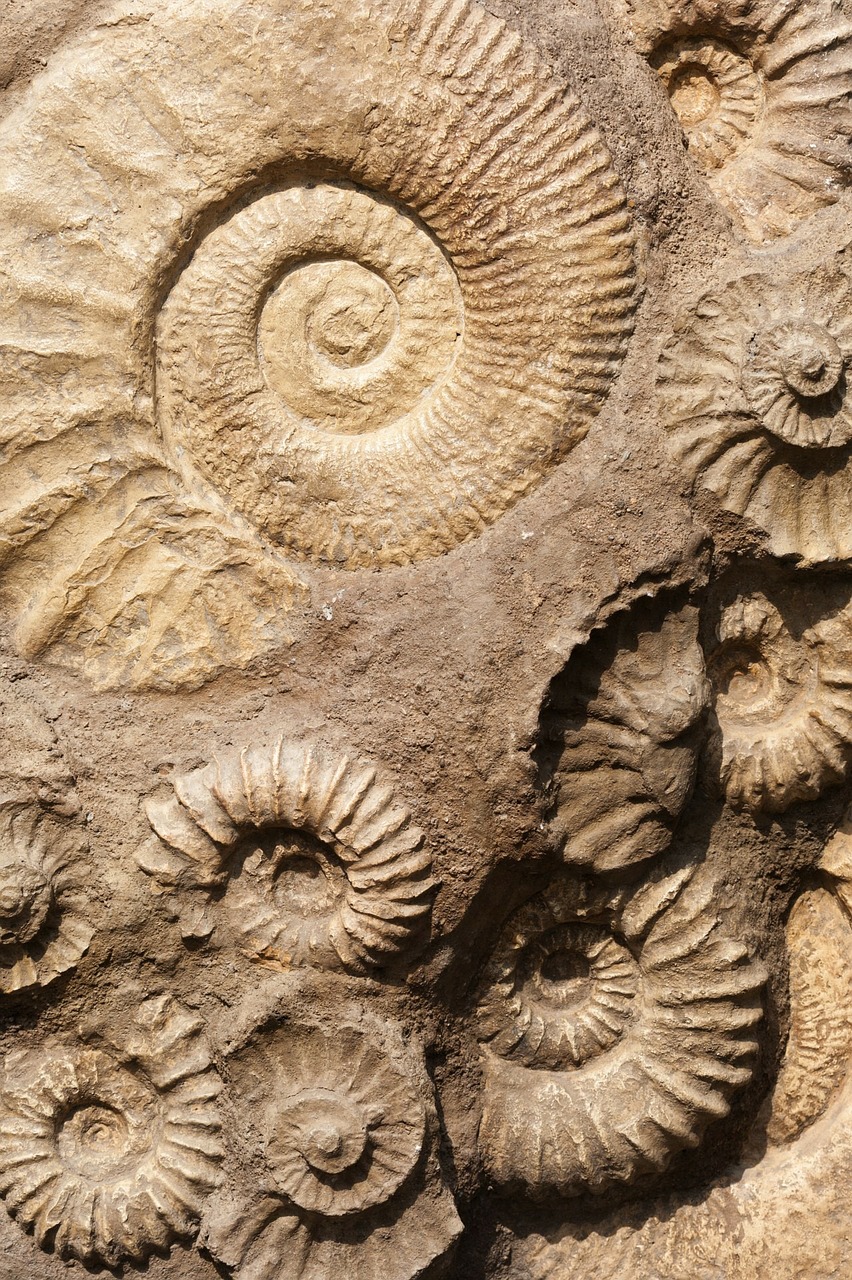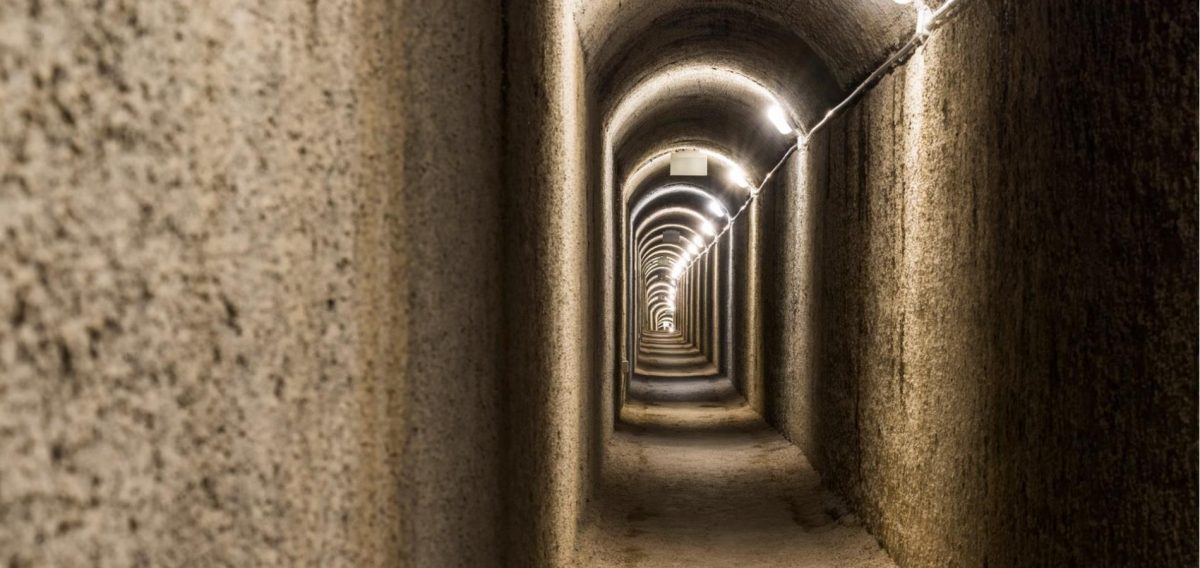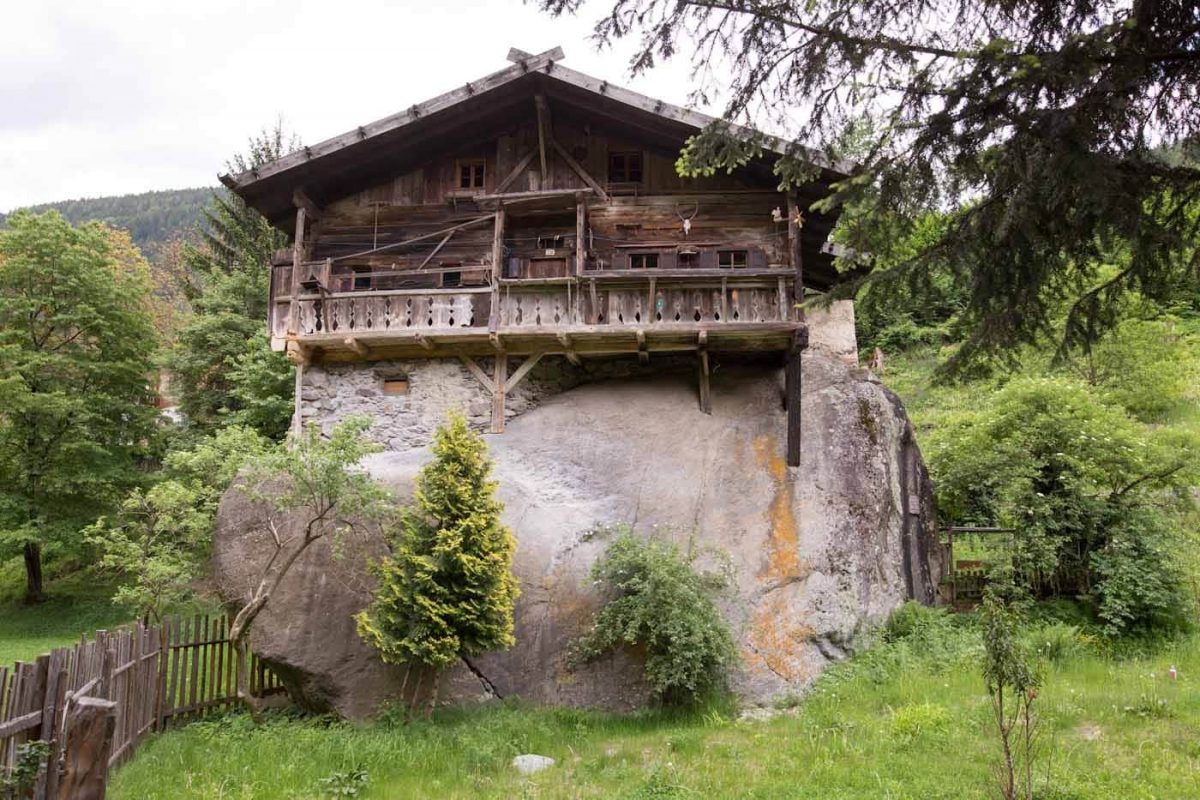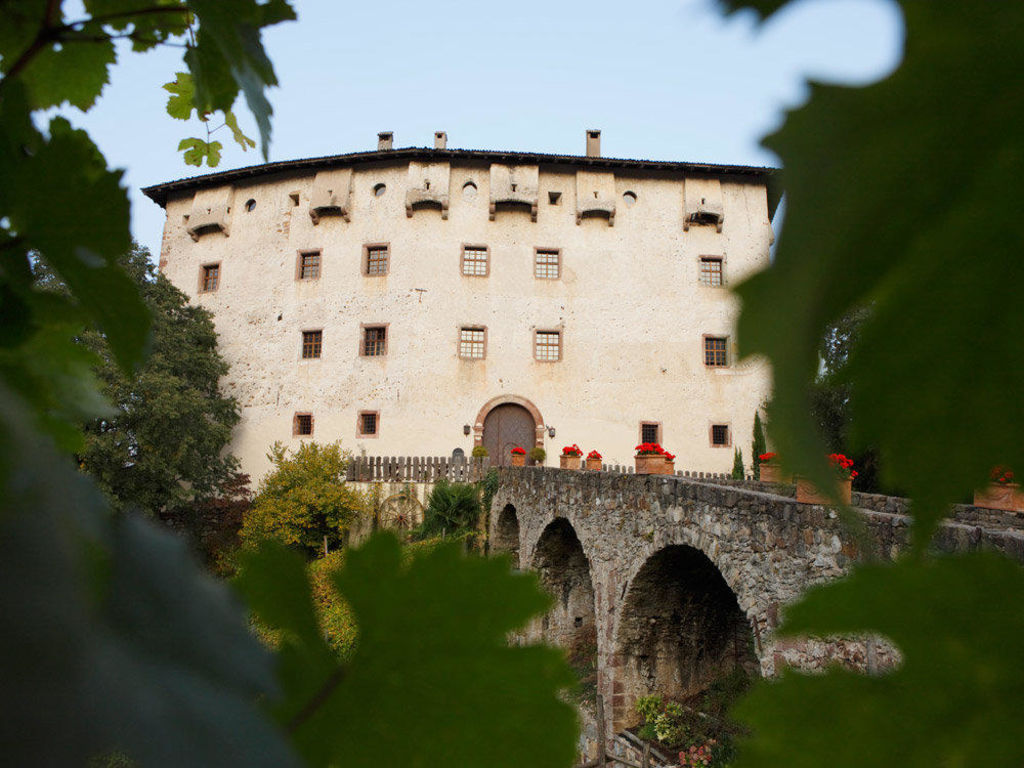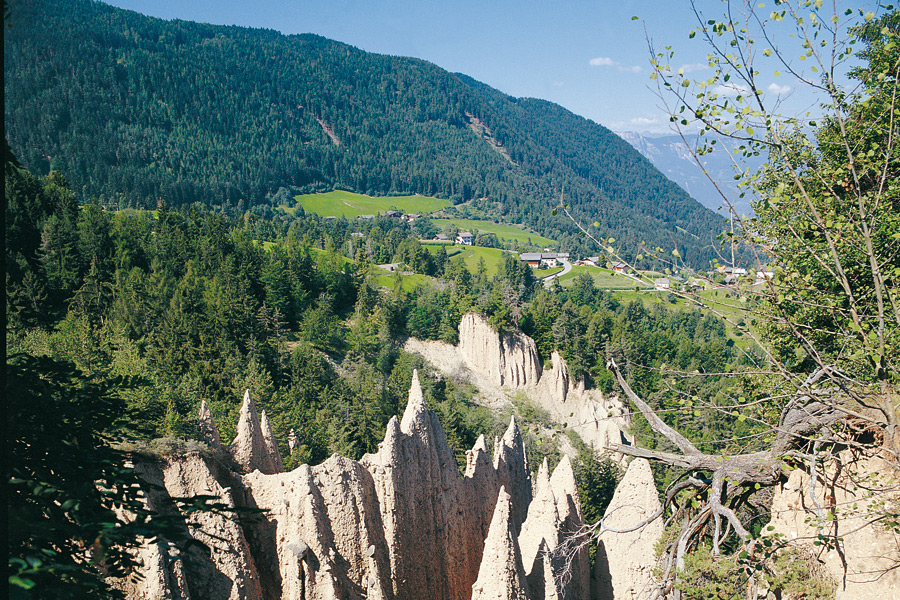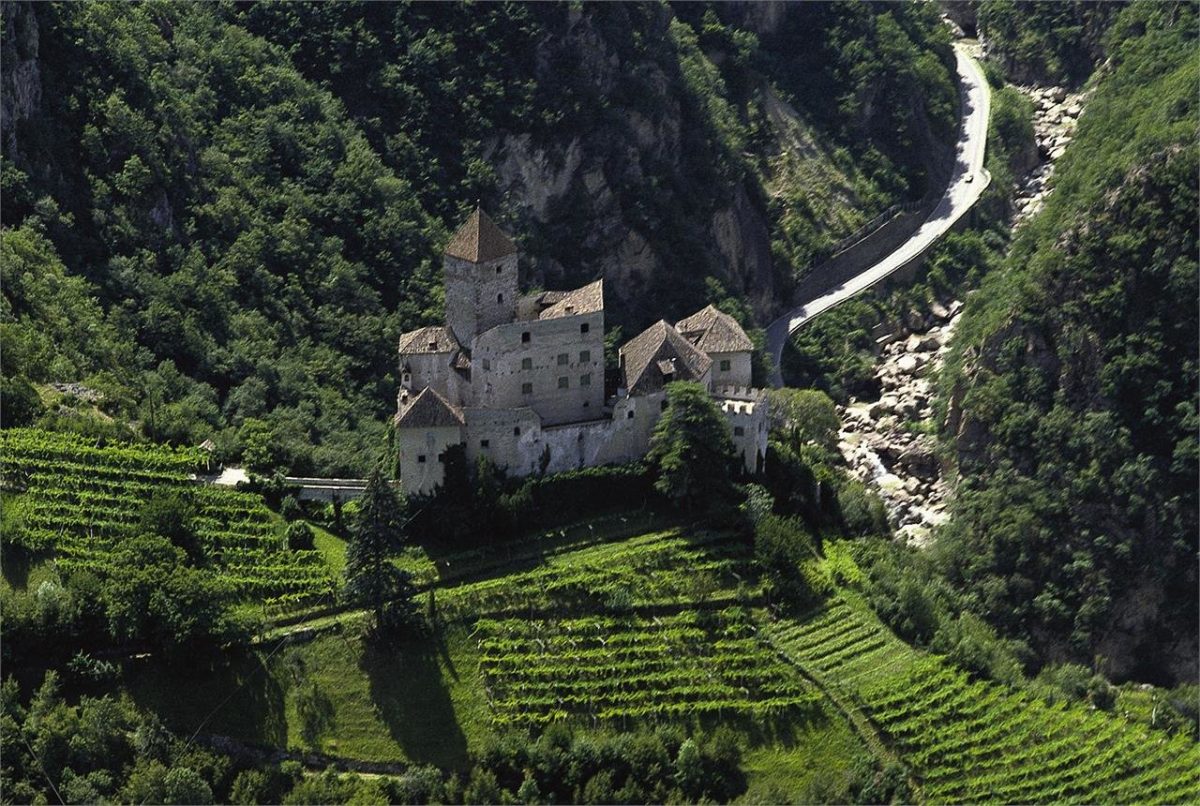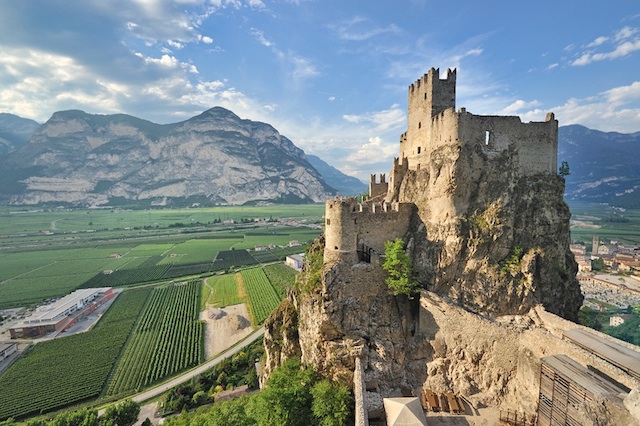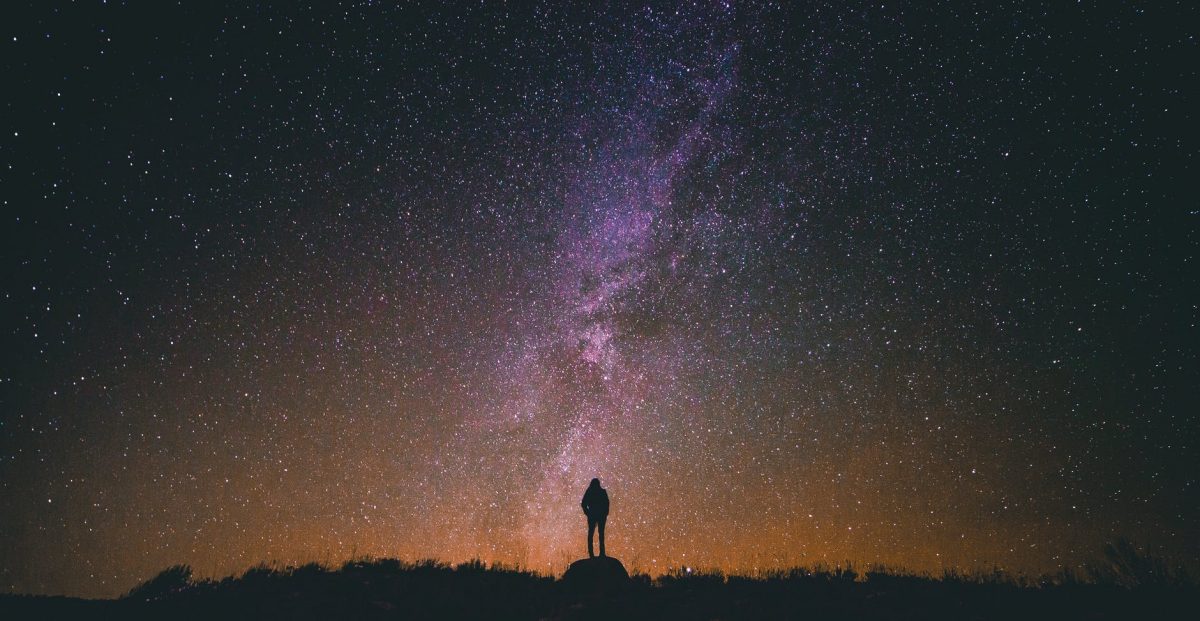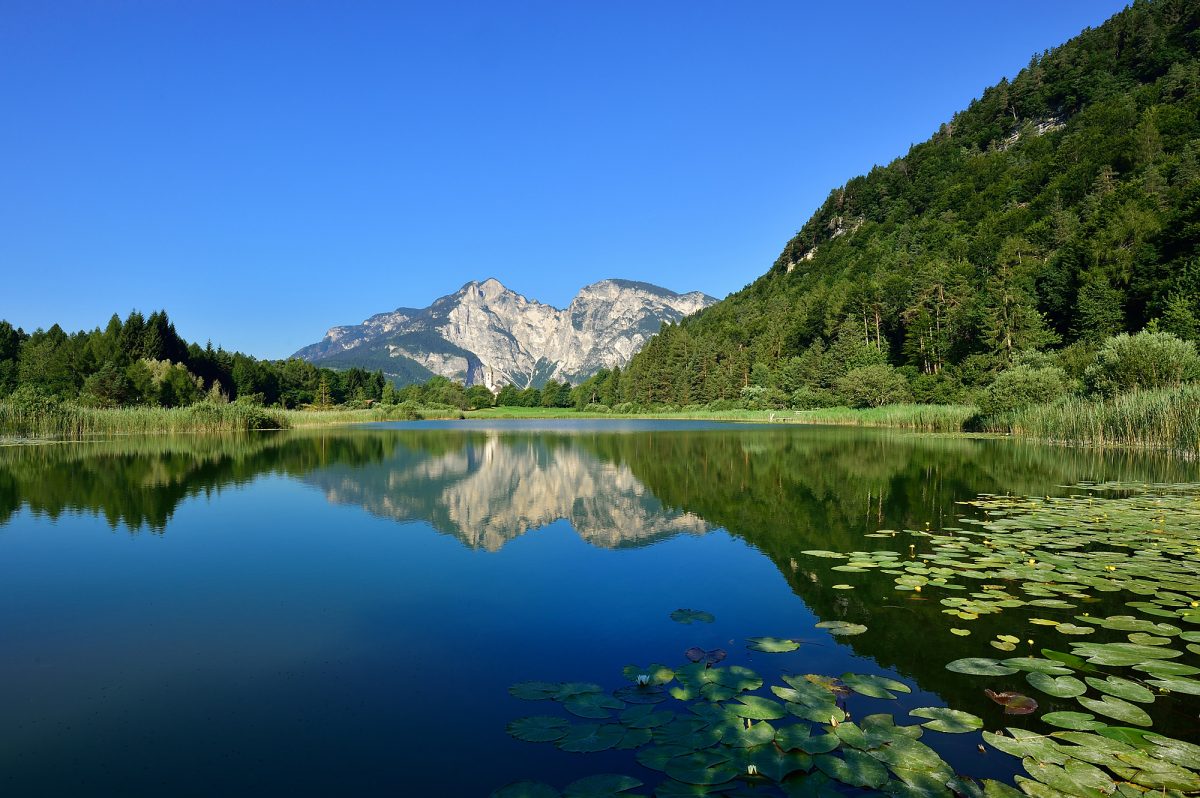How to reach Lake Favogna
A lovely winding mountain road leads you quickly up from Kurtatsch, through woods, meadows, vineyards, and fruit orchards to the high plateau of Fennberg/Favogna. While Oberfennberg (Upper Favogna, 1163m) with Castel Ulmburg (19th century) and the diminutive Mariahilf chapel (Mary help – 17th century) are private property and part of the community of Kurtatsch, the somewhat lower-lying plateau of Unterfennberg (Lower Favogna, 1047m), a collection of mountain farms and summer houses, belongs to the community of Magrè/Margreid. A beautiful little St. Leonard’s church and two restaurants are the centers of the small, dispersed hamlet.
The jewel of this South Tyrolean plateau is without question little Lake Favogna, perfect for a summer swim. Although the lake is registered as a biotope with unusual flora and fauna, a small wooden platform with a ladder down to the water gives you the chance of swimming in the clear moor water while enjoying the panoramic view of the St. Leonard’s church and the surrounding mountain peaks. Water lilies, reeds, and dragonflies build a summer frame for the lake, which is a popular spot for ice-skating during the cold winter months.
The plateau offers many walking paths as well as the possibility of traveling up by hiking path or via ferrata. The plateau is also an excellent destination for bikers, be it mountain bikers, motorbikes, or racing bikers.
df
Contact:
Tourist board Südtiroler Unterland
Hauptmann Schweiggl Platz 8
39040 Cortaccia
+39 0471 880100
